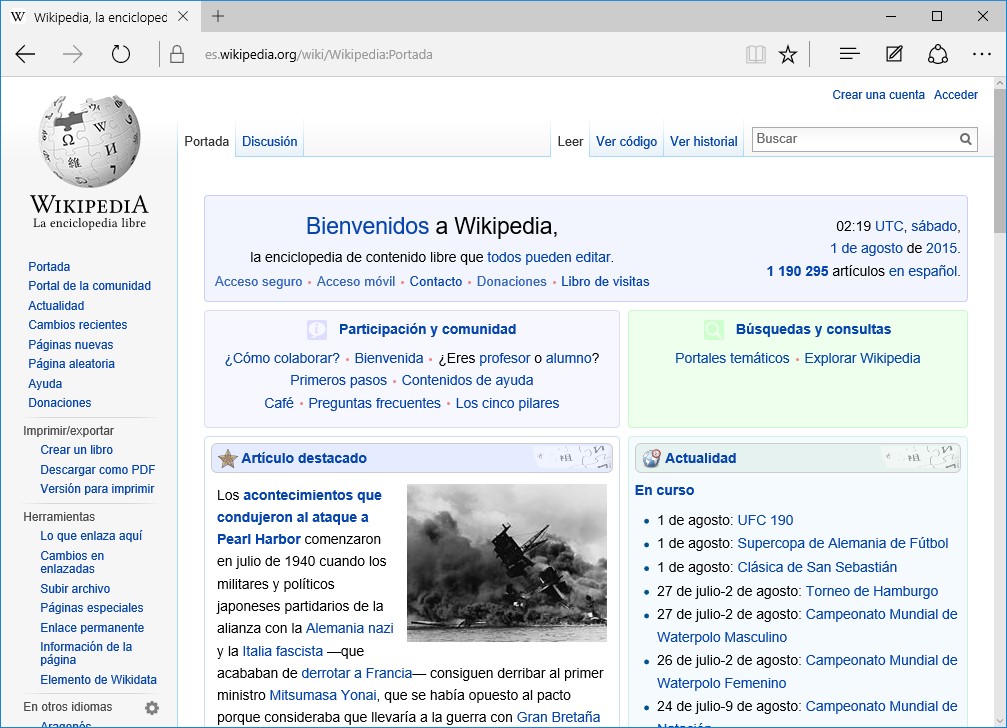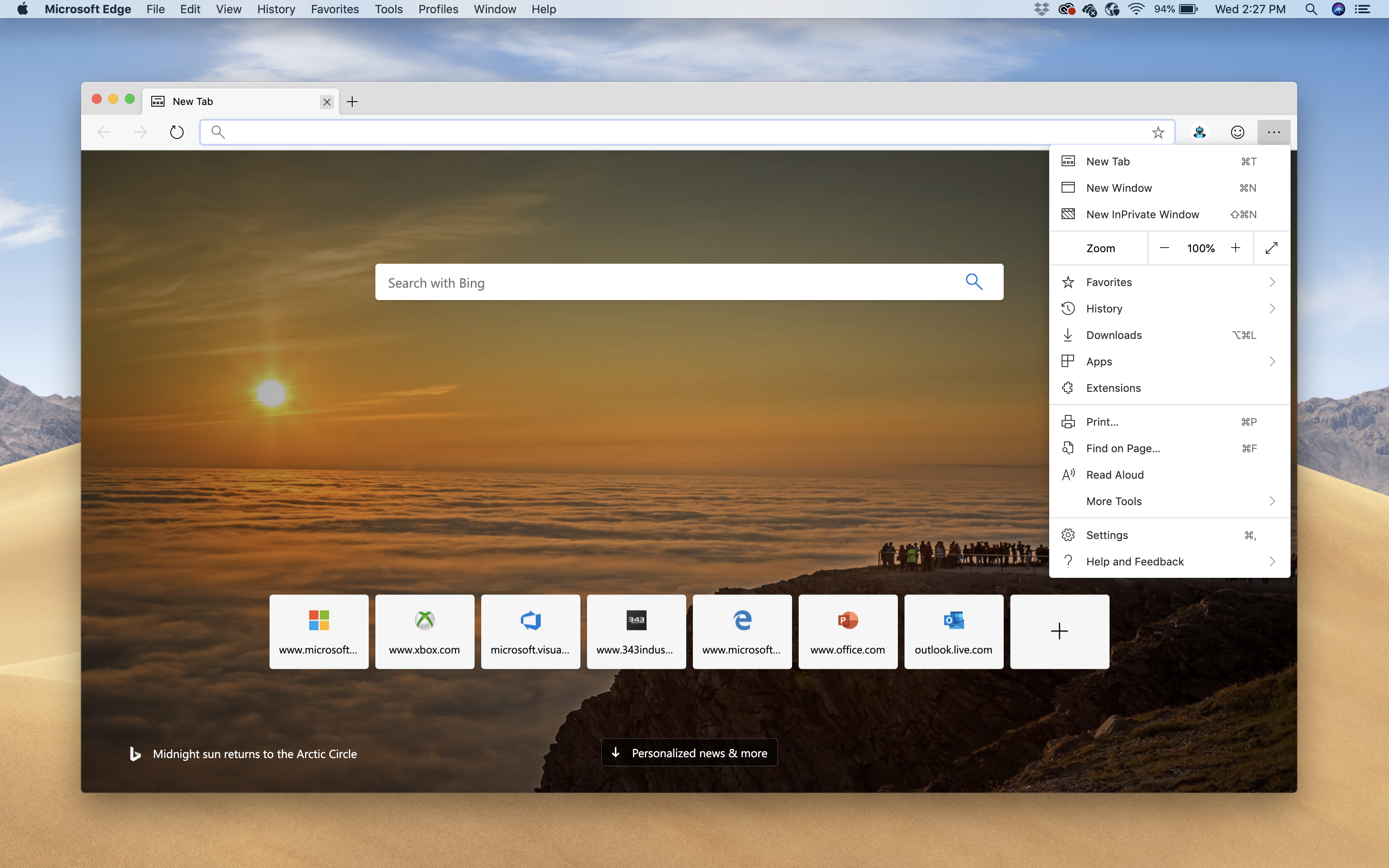- Edge Chromium Microsoft Store
- Chromium Web Browser Edge
- Edge Chromium Microsoft Download
- Edge Chromium Microsoft Update
- Microsoft's revamped Edge web browser, which is based on the same Chromium code that powers Google's Chrome browser, is finally here. Why use Microsoft Edge if it's now based on the same.
- Download and deploy the latest Microsoft Edge update for your business, school, or organization. Get the security, compatibility, and search features you need.
If you already have a device working as a kiosk, the setup will stop working unless you install the Chromium version of Microsoft Edge and reconfigure Assigned Access before the April update installs. Dmg 1250 ctx mill turncleverbridal. Microsoft 'new' Edge review: Microsoft's Chromium-based browser gets the job done Microsoft's new Edge is heading to your PC with a new look and feel, Chromium underpinnings that allow you access.
As of Wednesday, January 15, Microsoft will make the non-beta version of its new, Chromium-based version of the Edge browser to Windows 10 Home and Pro users. We covered the beta version of Chromium-based Edge in November. The beta was still pretty raw then—but 'raw' is a relative term. The new Edge project began with a complete and fully functional Web browser—Chromium—so it worked fine for browsing the Web. There were just a few rough edges as far as installing extensions, logging into them, and the like.
We've seen one take waxing nostalgic for the old, purely Microsoft developed version of Edge, but we don't think many people will miss it much. It's not so much that Edge was a bad browser, per se—it just didn't serve much of a purpose. Edge didn't have the breadth of extensions or the user-base enthusiasm of Chrome or Firefox—and it was no better than they are at running crusty old 'Internet Explorer Only' websites and Web apps.
While there is some validity to worrying about one company 'controlling the Web' and one of Google's biggest competitors now becoming a Google downstream, we don't think those concerns add up to much. We don't want to see the full-on Google Chrome become any more indispensable than it already is—but we don't think Microsoft trading in its own fully proprietary, closed-source HTML-rendering engine for one of the two biggest open source rendering engines is a bad thing.
We downloaded the final beta version of Chromium-based Edge—the one available on the afternoon of the 14th, one day before the official launch—and took it for a spin in a Windows 10 virtual machine. Mostly, it still just looks like a slightly plainer version of Chrome—which isn't a bad thing! Sites load snappily, UI elements are familiar, and so forth. One of the biggest obvious improvements since the last time we test-drove Chromium Edge is the ability to install extensions from the official Chrome Web store.
AdvertisementMicrosoft's own Web store is still extremely sparse—we went looking for the must-have, EFF-developed HTTPS Everywhere, and instead we got a recommendation for 'NBC Sports'—which does not seem well-loved by its users. However, typing 'chrome Web store' in the address/search bar took us right where we needed to go and presented us with an obvious tool-tip for installing third-party extensions. That was that—HTTPS Everywhere installed with a single click, just as you'd expect it to on Chromium or Google Chrome itself.
Chromium-based Edge is still missing a couple of obvious features to compete with the full Google Chrome experience—most notably, browser history and extensions don't sync between devices yet. This is described as a temporary problem in the 'Known Issues' page, and it may even be fixed already in the production version launching today.
Pushing the new Edge as something to look forward to right now is difficult—we suspect most people who really care about their browser will continue using Chrome, Firefox, or whatever less-well-known variant they've found and learned to love. Meanwhile, the people who have actually been actively using Edge likely won't notice much of a change—unless Microsoft bobbles something in the user data import functionality when they push the official, non-beta version out through Windows Update later this month.
In all likelihood, the change absolutely will improve the lives of the folks who 'just click the blue E' in the long run, though. It will likely make it easier for Microsoft to lure more technical users—who demand feature and extension parity but might be interested in Edge's Azure authentication back-end—away from Google Chrome.
This article initially stated that Chromium-based Edge was being pushed over Windows Update beginning on the 15th; a Microsoft representative reached out to correct us: it was only available for download beginning on the 15th, and will not be pushed over Windows Update until later this month. The article has been updated accordingly.
Alongside all the features and improvements in the roadmap for the new version of Microsoft Edge based on the Chromium engine, Microsoft includes a compatibility mode using the Internet Explorer rendering engine to load old websites.
The feature is known as “IE Mode,” and it has been designed for organizations to load internal sites without using a separate browser or having to redesign the site. The new approach loads the pages within Microsoft Edge like a regular website without using and managing multiple browsers.
If you want to start using it, the version of Microsoft Edge available through the stable channel now includes the “Internet Explorer compatibilities” settings to quickly enable IE Mode and a separate option to open Edge when browsing an incomparable website with Internet Explorer. Alongside the settings, it also possible to use the Group Policy Editor to configure the compatibility mode.
In this guide, you will learn the steps to enable IE Mode to load legacy websites using the Internet Explorer rendering engine on Chromium Edge for Windows 10. (You can also watch this video tutorial to configure the feature.)
How to enable IE mode on Microsoft Edge
To enable IE mode on Edge, use these steps:
Open Microsoft Edge on Windows 10.
Click the Settings and More (ellipsis) button on the top-right corner.
Select the Settings option.
Click on Default browser.
Under the “Internet Explorer compatibility” section, turn on the “Allow sites to be reloaded in Internet Explorer mode” toggle switch.
Click the Restart button.
Once you complete the steps, when sites require Internet Explorer, you can use Microsoft Edge to reload the page using IE mode.
Firefox was created by Mozilla as a faster, more private alternative to browsers like Internet Explorer, and now Chrome. Today, our mission-driven company and volunteer community continue to put your privacy above all else. Your privacy comes first. Web browsers games. Safari is the default browser that comes preinstalled on Apple devices, including both MacOS laptops and home computers, along with its smartphones in the iPhone range. It has all the basic features that you’d expect from a web browser and will do a serviceable job if you’re a casual user.
Open site with IE Mode on Edge
After the IE Mode is enabled, you need to reload a page with the compatibility mode manually.
To open an incompatible website with IE Mode on Edge, use these steps:
Open Microsoft Edge on Windows 10.
Click the Settings and More (ellipsis) button on the top-right corner.
Select the More tools submenu and choose the “Reload in Internet Explorer mode” option.
After you complete the steps, the website should reload in compatibility mode. If the feature is not enabled, then the option won’t be available in the menu.
If you want to exit IE Mode, you can use the same instructions, but on step No. 3, select the Exit Internet Explorer mode option.
Open Internet Explorer sites on Microsoft Edge
On Windows 10, Microsoft Edge also lets you configure the browser so that when someone is using Internet Explorer incompatible or all sites will load within Edge.
Edge Chromium Microsoft Store
To let IE open websites with Edge, use these steps:
Open Microsoft Edge on Windows 10.
Click the Settings and More (ellipsis) button on the top-right corner.
Select the Settings option.
Click on Default browser.
Under the “Internet Explorer compatibility” section, use the “Let Internet Explorer open sites in Microsoft Edge” drop-down menu and select the option to handle browsing when using Internet Explorer, including:
- Never – IE will never switch to Edge to load the site.
- Incompatible sites only – IE will still load sites, but websites designed for a modern browser will load in Edge.
- Always – IE will always switch to Edge to load websites.
Once you complete the steps, when surfing the web in Internet Explorer, websites will open on Microsoft Edge, according to your configuration.
How to enable IE mode with Group Policy on Microsoft Edge
Alternatively, you can also enable IE Mode on Chromium Edge with Group Policy. However, you will need to download and install the policy template before you can configure the Group Policy settings.
Install Microsoft Edge policy template
Chromium Web Browser Edge
To install the policy template to enable IE Mode on Edge, use these steps:
Open Microsoft Edge for business website.
Under the “Policy File” section, click the Download button.
Select the version of Microsoft Edge. (Usually, you want to use the latest stable version available.)
Select the build (latest version available). Paragon ntfs for mac v14.3.318 serial number.
Select the platform — for example, Windows 64-bit.
Click the Get policy files option.
Click the Accept & download button.
Double-click to open the MicrosoftEdgePolicyTemplates.zip file.
Click the Extract all button from the “Compressed Folder Tools” tab.
(Optional) Select the location to extract the files.
Check the Show extracted files when complete option.
Click the Extract button.
Browse the following path inside the (extracted) “MicrosoftEdgePolicyTemplates” folder:
Select the msedge.admx and msedgeupdate.admx files and click the Copy option from the “Home” tab.
Quick tip: You only need to copy the “msedgeupdate.admx” file if you want to control the update settings of Microsoft Edge.Browse to the following path:
Click the Paste button from the “Home” tab.
In the “admx” folder, inside the “MicrosoftEdgePolicyTemplates” folder, open the language folder that represents your language — for example, en-US.
Select the msedge.adml and msedgeupdate.adml files and click the Copy option from the “Home” tab.
Quick tip: You only need to copy the “msedgeupdate.adml” file if you also copy the file on step No.12.Browse to the following path that matches your language:
In the above command, make sure to change en-US for the folder that matches your language.
Click the Paste button from the “Home” tab.
Once you complete the steps, the new policies to enable or disable IE Mode on Edge Chromium will install in the Group Policy Editor.

Edge Chromium Microsoft Download
Enable IE Mode on Microsoft Edge
To enable IE Mode on Chromium Edge with Group Policy, use these steps:
Open Start.
Search for gpedit and click the top result to open the Group Policy Editor.
Browse the following path:
Double-click the Configure Internet Explorer integration policy.
Select the Enabled option to enable IE Mode for Microsoft Edge.
Under the “Options” section, select the Internet Explorer mode from the dropdown menu.
Click the Apply button.
Click the OK button.
After you complete the steps, websites will render in compatibility mode, and you’ll notice a familiar IE icon on the left side of the address bar letting you know the website is using Internet Explorer.
These steps enable IE Mode for intranet websites. If you want to load external websites using Chromium Edge, you need to enable and set up the “Configure the Enterprise Mode Site List” policy, which includes the creation of an XML file with the list of domains that you want to load automatically with the Internet Explorer mode.
Edge Chromium Microsoft Update
Update February 11, 2021: This guide has been revised with the steps to configure IE Mode on the Chromium version of Microsoft Edge using the new compatibility settings and updated the process to install the Group Policy templates.
